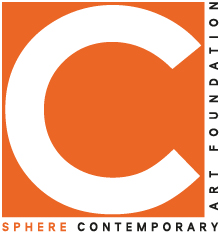This exhibition is a group statement made by Rodchenko School students and based on the artistic survey conducted in Tula.
Last autumn we went to that town to study local context and work with the local museum. Students were expected to create an original series that communicated the topic of ‘armament,’ which was the recurring theme in that project.
When we think about provincial towns, we somehow always go to myths. Russia’s contemporary myth production changes the way we see the country outside the metropolitan area. The structure of daily life or facts of life in backwater towns are still of great interest to Moscow artists. The idea of experiencing the corporality of the country and understanding how it works is obvious, even if fundamentally utopian.
Tula has produced weapons for nearly as long as it has been there. Weapons are its crown jewel yet also a source of frustration with the imposed stereotypical perception of this place by newcomers. The fortress city on the way to Yasnaya Polyana, which was closed during Soviet times, navigates its way between the concept of Tula pryanik and machine guns. Evolution of local brands, as well as the idea of domestic tourism while in isolation suggests a different approach to openness and hospitality to Russian regions.
Sometimes mundane things are plain to see, yet incredible things are hidden from view. Working in his series with ‘armament’ as a brand, Anton Andrienko ‘sews’ the patchwork quilt of what seems to be lying under one’s feet and directed towards the domestic tourist. Seemingly cheerful photos leave the audience slightly confused – people think that might have already seen something like that. All these objects are actually a collection of brands from the modern-day Tula or maybe even the entire country. City as a text. Hero City. The topic of ‘armament’ aligns with the topic of violence. Therefore, images Ekaterina Balaban photographs in her series are directly connected to danger and unpredictability of handling weapons. Poses of teenagers with assault rifles may refer to the school shooting syndrome that has finally reached Russia. Militarization and patriotic upbringing of teenagers whimsically manifest themselves through khakis and nails in Lisa Vdovina’s works about the police academy for women.
The topic of ‘armament’ in Tula provoked slight rejection in most of my students. Firstly, because of its nature, secondly, because they did not want to take photos of the dangers weapons held. Probably, the most extreme series in that group project was the piece by Ivan Gaidel, where he was looking for derivatives from ‘armament,’ i.e. violence in the chaotic wilds of Tula, so scary and sometimes dangerous.
For us, Tula is still a borderline place, where realia and obvious phenomena of Russia’s daily life come together.
Curator: Valery Nistratov
Artists: Ivan Gaidel, Anna Usyakina, Maksim Zmeev, Boris Pospelov, Anton Andrienko, Maria Sviridova, Ekaterina Balaban and Elizaveta Vdovina E
Studio of the Foundation of Vladimir Smirnov and Konstantine Sorokin Duration: 01.02 – 04.02.2019M
